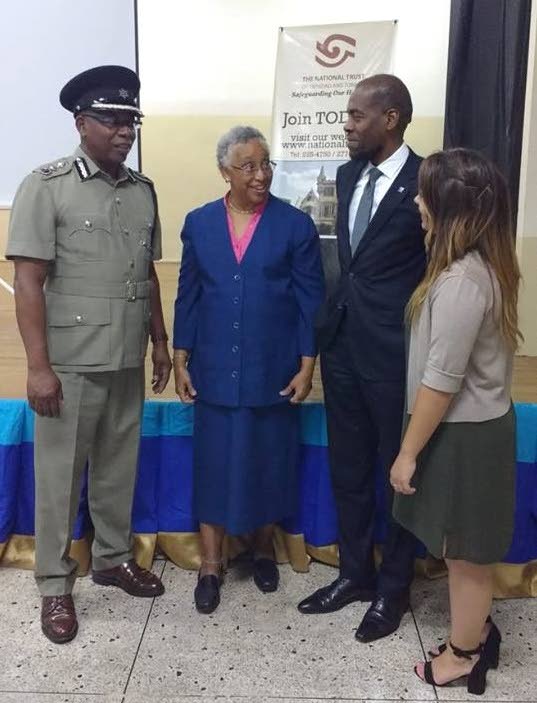Deteriorating historic St James Barracks to be listed

CHAIRMAN of the National Trust Margaret McDowall says the historic buildings at the St James Barracks will be listed to be protected, after a report that the site is rapidly deteriorating.
She was speaking at the trust's St James Police Barracks presentation at the barracks gymnasium on Wednesday night.
McDowall told the gathering a dossier on the site was done in order to list the building as a site of national significance, and also could be used to educate people on its history.
When a site is listed, the property is deemed a heritage property and is entitled to legal protection. According to the trust's website, in fulfilment of its mandate to formally list properties and sites which are important to the national heritage, 29 sites have been listed so far. The trust was set up in 1991.
US/International Council on Monuments and Sites intern Mayrelis Hernandez gave a lecture on the site, which was first constructed in 1824, and completed the dossier based on a two-month survey. She said of the 26 buildings, ten were considered historic, and the site has a national level of significance, having been used continuously by the British and Trinidad Government since it was built.
She also said it is the only example locally of Georgian architecture, a style originating from Italy and then the British.
Hernandez detailed the long history of the site, from a headquarters for British soldiers, to 1889 when those troops left and the Government established a police training site, and during World War II, when, she said, it was turned into an internment camp and German citizens were deemed enemy agents and detained.
"The barracks played an important role in Trinidad society."
She said the historic buildings featured materials that would be hard to find in current construction, including blue limestone.
Hernandez said during her survey a variety of deterioration problems were found and advised a materials expert should be contacted.
One issue was a lot of vegetation, and she cautioned that if the roots continued to spread, this could cause major structural problems. She also said there was an issue with the use of sandblasting to clean and remove paint, which damaged the buildings. Hernandez described it as "scary" that the foundation of the building could crumble in one's hands.
But, she said, "These historic buildings could be brought back to life. They are on site for more than 200 years and are still standing."
She said it was important to preserve primary examples of great architecture for future generations and also as a source for economic growth.
She also suggested returning the police museum from the old Police Headquarters in Port of Spain.
During the question-and-answer segment Hernandez was asked about the campaign to have the Christopher Columbus statue in Port of Spain removed. She said she was not too familiar with the issue but did not agree with the move, because, "It is a part of your history."


Comments
"Deteriorating historic St James Barracks to be listed"